 Introduction
Introduction
Argentina has experienced a couple of significant revivals. The first was the 1949 Argentine Revival. That particular revival was a precursor to the 1954 Argentine Revival with Tommy Hicks, wherein 200,000 – 300,000 conversions were reported, as well as many thousands of documented healings.
As powerful and significant as those revivals were, the Argentine Church was not prepared for them. The harvest was so large that the numbers harvested overwhelmed the churches. With the lack of prepared workers, the new converts were not effectively followed-up on and they were not assimilated into the churches.
Despite the mass salvations and healings, after just a few years the churches in Argentina settled back into a “normal” maintenance mode. From the early ‘60s until the early 1980s, the church growth rate in Argentina was one of the slowest in the world.
Conditions Prior to the Revival
These were some of the conditions found in the nation when the 1984 Argentine Revival began.
► Argentina had the lowest percentage of evangelicals in Latin America during the 1970s.
► The nation was reputedly among the most difficult places on earth to preach the gospel.
► For centuries, Argentine Christianity has been wrapped in the dominant religious traditions of Roman Catholicism. Mixed with local customs, Catholicism had grown perverse, as it included the worship of many legendary characters from Argentina’s popular culture, such as Gauchito Gil, San La Muerte, and Difunta Correa.

Many Catholics in Argentina venerate, pray to, and offer sacrifices to these and other “saints.”
Left: Gauchito Gil; top right: San La Muerte; bottom right; Difunta Corea
► Most of the populace were totally given over to voodoo types of religions or spiritism.
► People of all economic groups were involved in the occult practices of Umbanda and Macumba.
► The propagation of witchcraft in Argentina during the government of Juan Domingo Perón cannot be underestimated. It had infiltrated the media and entertainment world as well as the public school systems. National figures were on television every day, testifying to their involvement in those practices.

José López Rega – El Brujo
(The Warlock)
► As his influence waned in the early 1970s, President Juan Perón linked up with a powerful occult practitioner, José López Rega, known popularly as “El Brujo” (the warlock). López Rega served under Perón as social welfare minister, and after Perón’s death in 1974 became the chief advisor to his wife, Isabel Perón, during her two years as president. He erected a public monument to witchcraft (since dismantled) and is said by many to have publicly cursed the nation when he lost power with the military coup of 1976.
► The nation has a culture of extreme sensuality: among the highest proportionately in the world for sales of negligees, undergarments, and perfumes.
► Imposing sexual advertising is everywhere.
► The fixation on body aesthetics has resulted in extremely high percentages of those suffering from anorexia and bulimia.
► A military dictatorship was in place from 1976 – 1983.
► The “Dirty War” was being fought between leftist guerrilla units and the military (1976 – 1983). This resulted in the disappearance of about 30,000 political dissidents.
► Between April 2 and June 14, 1982, there was the Falklands War with the United Kingdom, resulting in the Argentina’s military defeat.
► The loss of the war resulted in a severe blow to the Argentina’s national pride, for which they were internationally notorious.
► The economy of the nation was at times hitting 5,000% inflation per year.
► Due to the economic conditions, many lost their dreams as well as their prestige.
► With the severe depression covering the nation, many sought help from psychiatrists or parapsychologists. The country has the highest ratio in the world of mental health counselors to population.
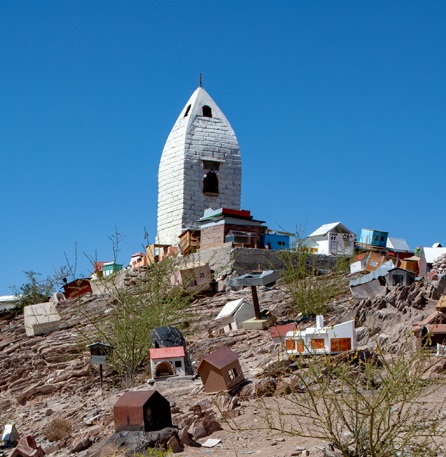
A wayside shrine for the semi-pagan
Difunta Correa
Extraordinary Prayer
Pastor Alberto Scataglini, and his congregation of 50 people in the city of La Plata, had used every evangelistic method possible, yet the city remained very resistant to the gospel.
After fifteen years of ministry in his church, the young people talked with Pastor Scataglini about their intense desire to commit their all to Christ. Pastor Scataglini then asked the entire youth group if they would be willing to seek God earnestly and pay the price to see God work in their church and community. Out of the 50 or 60 young people in the group, only 6 decided to make the commitment.
For months they prayed, and the initial response was God bringing severe conviction of sin upon those who were praying. That is a typical beginning to every revival.
That conviction of sin led the youth to begin confessing their sins one to another. God then spoke to them, that the year would be dedicated to consolidation, and the next year, 1984, would be conquest. By the end of the year the youth group had grown to 200 in attendance, and Pastor Scataglini’s idea was to send them out to start 30 different preaching points around the city.
With the church’s attendance having grown to 500, and with the goal for 5,000 within 5 years, nobody imagined that in one year the church would be running not just 5,000, but they would see 20,000 visiting the church each month, and thousands more would be attending in 300 different locations around the city of La Plata.
Pastor Scataglini recalls that at this time he found himself prophesying in the middle of a sermon, and what came out of his mouth surprised him. He said,
Some of you have sat in the same pew for years, and you are not interested in church growth. Either change or you will lose your seat. Not only will you lose your seat, but your place of ministry in the church.
Some people’s reaction was to laugh the warning off, but this is exactly what happened. The new converts that began flooding the church began to demonstrate more maturity and commitment than some believers with 25 years of attendance in the church.
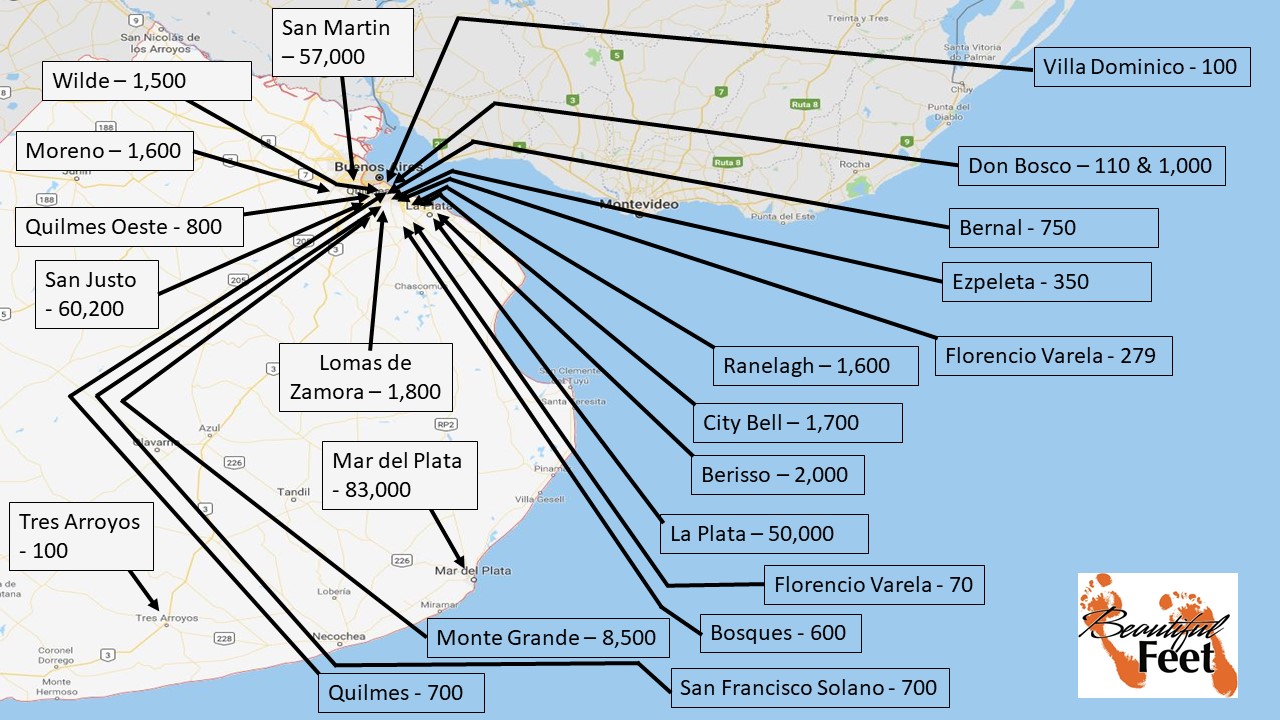
Map of Buenos Aires Province where a few of the Annacondia campaigns took place, with the numbers converted at each location.
What Happened
It is the consensus of all involved that the revival was sparked through the ministry of Carlos Annacondia. His massive evangelistic campaigns, which always featured verifiable healings as well as overt confrontation with the demonic, created immediate national and worldwide attention.
It was the undeniable miracles that opened the hearts of the masses and brought them to the services. Some came out of curiosity, some to mock, and others out of desperation. Regardless of the reason, the masses flocked to the services.
An Unknown Evangelist
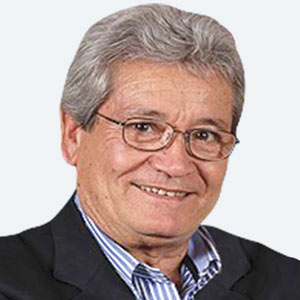
Carlos Annacondia
By 1982, Carlos Annacondia had a team of people working with him conducting evangelistic campaigns. As they were planning a campaign in the city of La Plata, they were working to unite the seven churches in that town to participate, and one of the pastors contacted was Alberto Scataglini, who had a church of 500 members.
When Scataglini learned that Annacondia had only known the Lord four years, and had no theological training, he was reluctant to involve his congregation.
Annacondia knew that Pastor Alberto Scataglini’s participation was vital, as that pastor was recognized as a leader among the pastors, not only among the pastors in La Plata, but throughout the nation. Scataglini had been the national superintendent of the Assemblies of God in Argentina and was a very respected man with great influence and experience.
Annacondia then made a personal visit at Scataglini’s home, and while the two were talking, the Lord spoke to Scataglini:
Participate in the campaign, and do everything he says. This is my servant.
Scataglini then agreed to participate, and asked Annacondia when the meetings were to start. Annacondia said “in two weeks.”
This left Scataglini uncomfortable because, in his experience, the churches would take six months to plan evangelistic events. He viewed the time schedule as unrealistic but agreed to obey God and participate.
Scataglini then learned that an open field and a tent were going to be used as the venue. That information left him very uncomfortable. He doubted that anyone would want to come to services in a field. Yet the plans moved forward with the La Plata churches being united for the campaign.
During the first night, with thousands gathered, 144 came forward to accept Christ—an overwhelming response that shocked the pastors. A previous attempt at evangelism through this type of effort in this city resulted in only 1 person responding.
The PA system during the service was very loud, resulting in neighbors calling the police to come and control the “disturbance.” The chief of police sent two police officers, but they didn’t return. The chief of police sent two more, and they also didn’t return. He then sent two more, and they also failed to report back. The chief then went to find out what was happening, and discovered that his officers were being prayed for in the “Intensive Care Tent” where the evangelistic campaign was taking place.
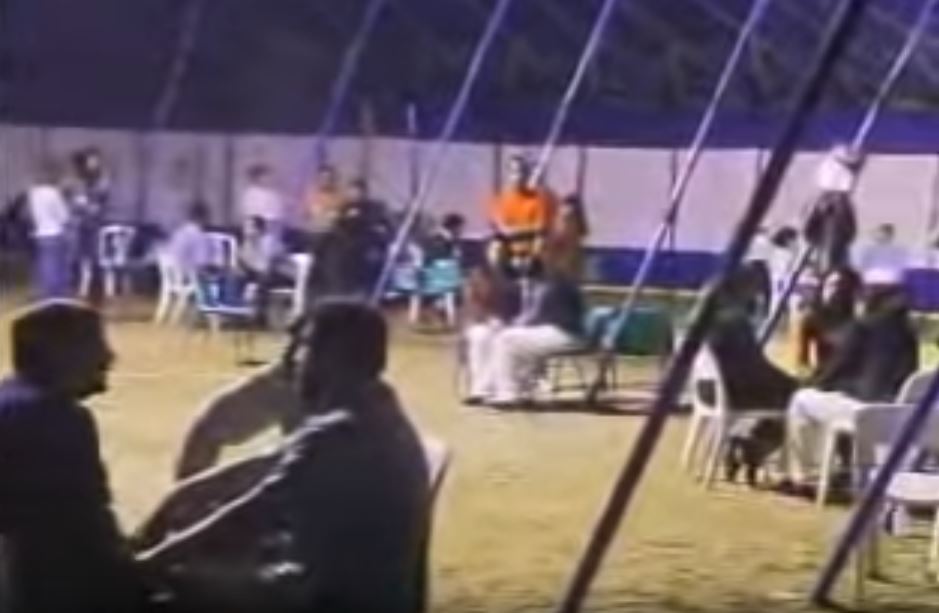
Inside the Intensive Care Tent
Intensive Care Tent
With the occult being practiced by a large majority of the people in Argentina, and with the area where the campaign was being conducted being dominated by witches and warlocks, there was tremendous demonic activity. The following practices were practiced openly in the neighborhood and nation: Umbanda, Quimbanda, Macumba, spiritualism, Satanism, voodoo, sorcery, witchcraft, Santería, and other forms of the occult.
Carlos Annacondia, following Jesus’ method of ministry, was not ignorant of the demonized and demonic activity that would attempt to disrupt his services and preaching. Aware of this influence, he always dealt with the demonic presence prior to preaching his sermons.
Before preaching God’s Word, I pray and rebuke all evil spirits that want to bring confusion and put obstacles in the minds of those who are going to hear God’s Word. –Carlos Annacondia
Annacondia’s approach to the demonic was bold and brash. He would loudly call out prior to preaching his sermons:
Listen to me, Satan! In the name of Jesus of Nazareth, I command you to loose the captives, now!
After he would directly confront the evil spirits with those words, a wave of God’s presence would move through those assembled, and demons would instantly manifest in those being controlled by them. People would fall to the ground, writhing and screaming.
The affected individuals were then helped up by two “stretcher-bearers” (as they were called) and ushered into the “Intensive-Care Tent” where they would be given 2-on-1 attention to deliver them from those demons. This became like a trademark for Annacondia campaigns.
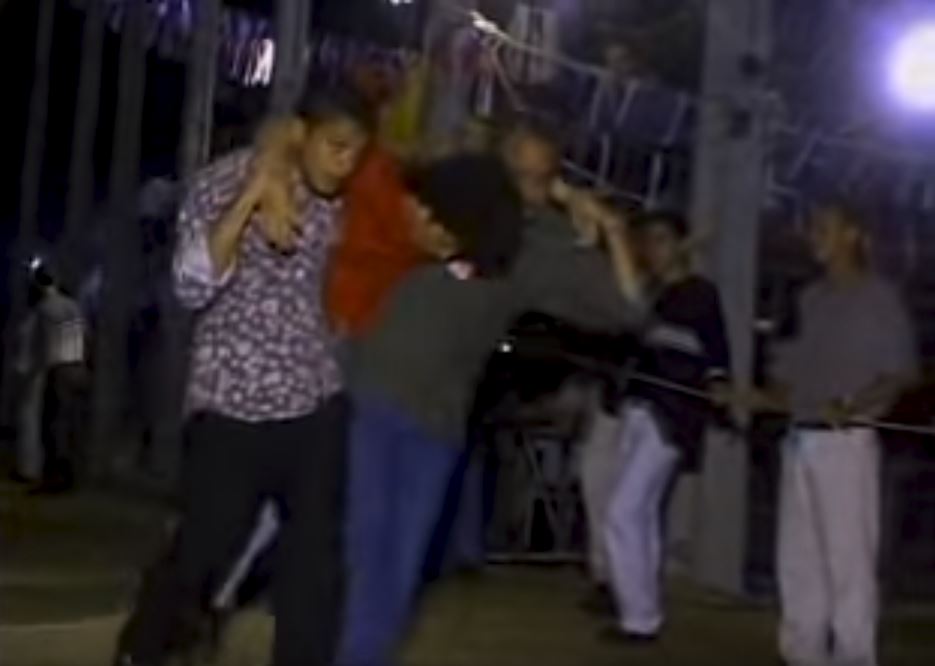
“Stretcher Bearers” carrying a demonized person to the “Intensive Care Tent”

Ministry for the Demonized is Two-On-One
Why Not Public Deliverances of the Demonized?
Jesus cast demons out of people in full public view. The question may be asked, why did Annacondia choose to have a special tent set up where this ministry took place? His response was:
► He wanted to protect the affected people’s dignity.
► His desire was to get those who had fallen to the ground and were writhing around out of the public view to avoid embarrassing them. Only pastors or trained leaders were allowed in the tent. This also helped ensure that the workers wouldn’t be interrupted as the Holy Spirit was deeply at work in those being ministered to.
Administration for the Campaigns
The actual planning for the Annacondia evangelistic services was no different than what was common with traditional evangelists:
- They would secure a broad base of support from pastors in the area (similar to Billy Graham and Luis Palau)
- There was no formal theological training (similar to Dwight Moody and Billy Sunday)
- Services featured miracles, healings, and deliverance from evil spirits (like Reinhard Bonnke and T.L. Osborn)
- The services, lasting three to five hours, had intercessors praying the entire time
- A simple gospel message was presented
- An invitation was given to come forward to receive Christ as Lord and Savior
- Trained counselors were on hand to lead them to Christ and give them literature
- Inquirers’ names were collected and given to a local church to do follow-up

Carlos Annacondia ministering in 2017
Demands of Ministry
Pastor Alberto Scataglini shared that there were many evenings in which he never undressed. There was always someone coming to their home in the middle of the night, asking for prayer, or bringing someone that was demonized. Due to those ongoing interruptions, and to capitalize upon the moment, they stayed in a state of preparedness to minister to as many as they could.
Prayer Ensured Success
Under the preaching platform there was room for 500 people to be gathered for prayer during the entire service. Prayer would start at 7 p.m. and would end around 10 p.m., and sometimes go on till 1:30 a.m., when all ministry had concluded.
In many campaigns there were 1,000 that would sign up to intercede during the services. They would be divided up into two groups of 500, and they would pray in shifts.
Unprepared to Care for the New Converts
With tears, Pastor Alberto Scataglini confessed that the seven churches of La Plata were unprepared for the huge number of people that came to Christ (50,000 during the eight-month campaign in La Plata).
We just weren’t ready for it. We lost so many people because we were not prepared to do follow-up.
The church Alberto Scataglini was pastoring had an attendance of 500. In one year, the mother church was having 20,000 visit them each month, with thousands more attending in 300 different locations in the city of La Plata.
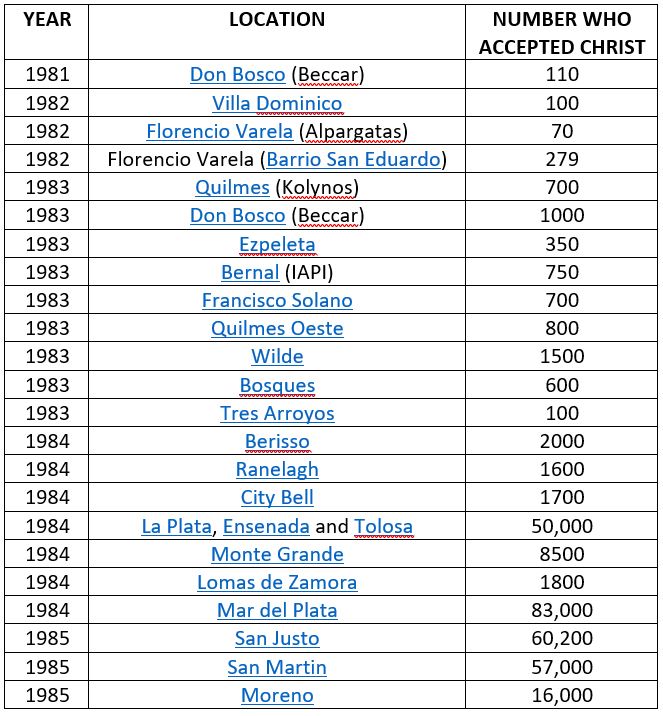
Graph from The Rising Revival by C. Peter Wagner
All of these campaigns took place in the province of Buenos Aires, where half the population of the country lives.
Typical Order of Services
- Singing
- Announcements
- Prayer—directly rebuking demonic spirits that would attempt to hinder the people from hearing the Gospel
- Simple gospel message
- Invitation to accept Christ
- Praying for the sick
- Casting out demons in the tent
- Testimonies were allowed to be shared
- Prayer for impartation or anointing for each person who desired it
The Ripple Effect
Another dynamic of those evangelistic efforts was the long-term consistency. Rain or shine the services would go on day after day. In a three-day event there can be a lot of fruit. But it isn’t the same as what happens when the meeting has gone on 40-60 days.
The services would have a ripple effect the longer they continued. The first wave of miracles affects those who are in a close radius to the campaign. Those healed or delivered tell all their relatives and friends and the next circle is even wider. Then all those people tell their friends, and within just a few days there would be 100,000 people in attendance.
The Open Field
The evangelistic campaigns were often conducted in a field close to a congested neighborhood. If they were to be held in a stadium, church, theater, or another commonly used building, there would be a tradition attached to that venue, and it would create inhibitions in the people’s minds and they wouldn’t attend.
Another benefit of the open field was that there was no limit to the growth that could be sustained. The open field also created a festive atmosphere (food stands included), which drew larger crowds.

Carlos Annacondia ministering in 2018
The Revival’s Continuity
A revival typically lasts a few months to a few years. The Argentine Revival has lasted a couple of decades. Here are a few of the reasons why it is believed that the Argentine revival is ongoing:
► The British Great Awakening (1738 – 1791) had strong “apostle-like” leaders, which gave governmental guidance to the movement. The Argentine Revival is said to have had the same type of apostolic leadership.
► The key personalities were local pastors, not foreign speakers. Those pastors desired the steady growth of their congregations.
► The emergence of megachurches added tremendous credibility and awareness.
► Evangelical journalism emerged, with several widely-circulated publications.
► Increased Christian unity, with a mindset of a “single church in each city”
► The development of Christian radio and television programs (Argentina 700 Club)
► Churches involved in community social programs
► The rise of parachurch organizations
► Using a “group of 12” pastoral system, each person was ministered to individually, and people were not overlooked. With this system, there was no question as to who you would invest your time into.
► The pastors were not in a hurry. They took the time to pray individually with people at the altars after services.
► The focus was always towards winning the lost.
► Miracles were confirmed, documented, and published. Time was given for testimonies during church services, as well as during the evangelistic campaigns.
► There was a delegation of authority to many leaders. The pastor relinquished control, but not leadership.
Results of the Revival
► In 1990, evangelicals in Argentina numbered one half of one percent, roughly 200,000 believers. Today the percentage of those born again is over 10% of the population, or four million people. That is a 2,000% increase.
► In addition to the numerical growth of the church, there has also been organizational maturity, the emergence of qualified leadership, unity among pastors, greater commitment to evangelism and a development in discipleship.
► There has been the establishment of pastors’ associations in each city.
► Many miraculous healings were reported. Many pastors would attend Annacondia’s services, receive prayer, and after they returned to their own congregations, a fresh anointing accompanied them.
► There were so many testimonies of transformed lives that a team had to screen the many that came forward so that the most verifiable testimonies could be given.
►Following the campaigns, every church tried to purchase a tent to have its own outreach.
► Carlos Annacondia allowed the other pastors to pray for the people alongside him. With the pastors having lots of experience praying for the sick and casting out demons, that power was soon seen throughout the nation.
► Nonresident Bible institutes began to spring up across the nation. From eight Bible schools with an attendance of 180 in all, the numbers grew to a total of 5,500 in just eight years.
► The resident Bible Institute Instituto Biblico Rio de la Plata (IBRP) grew from 80 students to 342 in just seven years.
► Two other resident Bible schools were started.
► An extensive training program called IETE, Instituto de Educación Teológica was started.
► Within three years, the revival had caused a major growth crisis at Pentecostal training centers. A nondenominational training program called Seminario Biblico de Fe grew to hundreds of students only five years after the La Plata outreach.
► Prison Ministries: In 1983 Pastor Juan Zuccarelli began his work in the jails with only four inmates that knew the Lord. The next year he was led by God to train as a guard so he could pastor those men behind bars. There are now over 8,000 inmates in the province of Buenos Aires who have accepted the Lord, and through this ministry a total of approximately 30,000 prisoners have accepted Christ. There is even one entire Christian jail dedicated to becoming leaders among the inmates. This is the first jail in the world of purely Christian inmates. Obviously, these men received Christ once they were behind bars.
► There are clear connections between the Argentina Revival and the revivals experienced in Toronto and Pensacola during the 1990s (revivals spread like fire).
Not a One-Man Show
The Argentine revival, as in every revival, had many different players. Here are a few of the pastors and evangelists that played significant roles through the years.
- Carlos Annacondia
- Alberto Aranda
- Mario Bertolini
- Pablo Bottari
- Jose Manuel Carlos
- Omar Cabrera
- Osvaldo Carnival
- Pablo A. Deiros
- Juan Dicresensio
- Lorne Fox
- Claudio Freidzon
- Dante Gebel
- Hector Gimenez
- Eduardo Lorenzo
- Carlos Mraida
- Edgardo Munoz
- Omar Olier
- Guillermo Prein
- Alberto Scataglini
- Sergio Scataglini
- Ed Silvoso
- Hugo Weiss
- Marcos Witt
- Juan Zuccarelli
- A notable Bible Institute with a significant history in Argentina’s revivals: Instituto Biblico Rio de la Plata
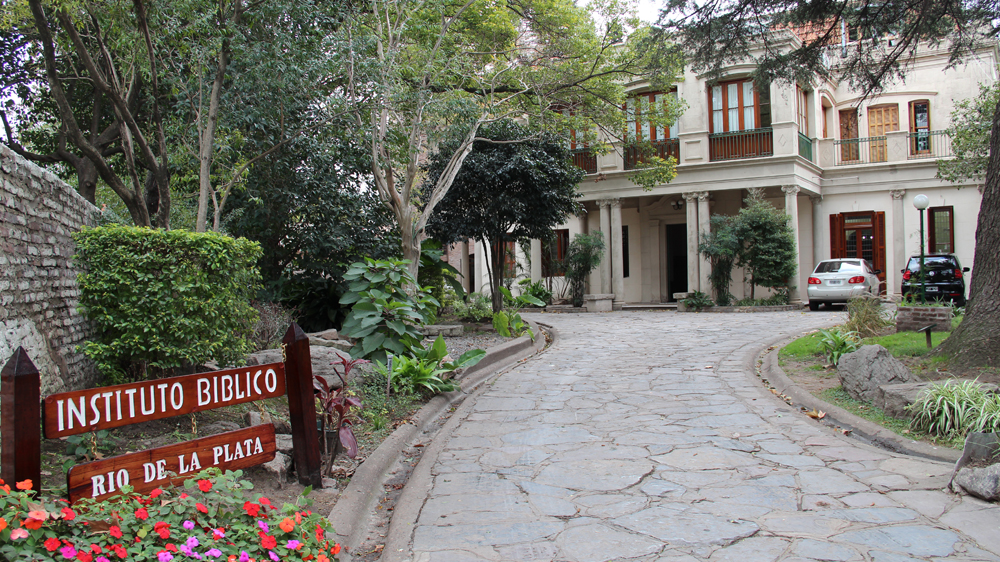
Bible Institute that was started in 1948
Sources
In Awe In Argentina by Rocky Grams
Listen to Me, Satan! by Carlos Annacondia
The Fire of His Holiness by Sergio Scataglini
The Rising Revival by Peter C. Wagner
Return to List of Revival Stories
Chet & Phyllis Swearingen
(260) 920-8248
romans1015@outlook.com
Beautiful Feet
P.O. Box 915
Auburn, IN 46706

